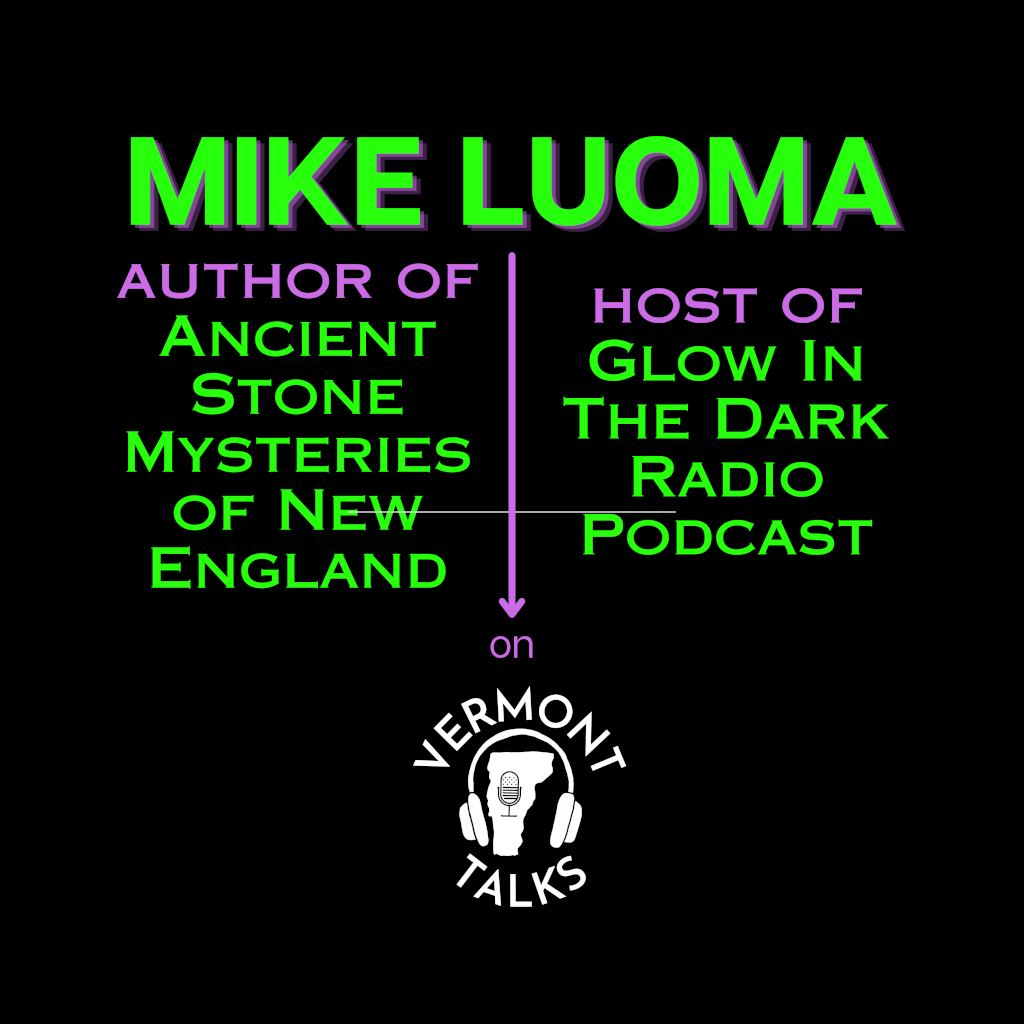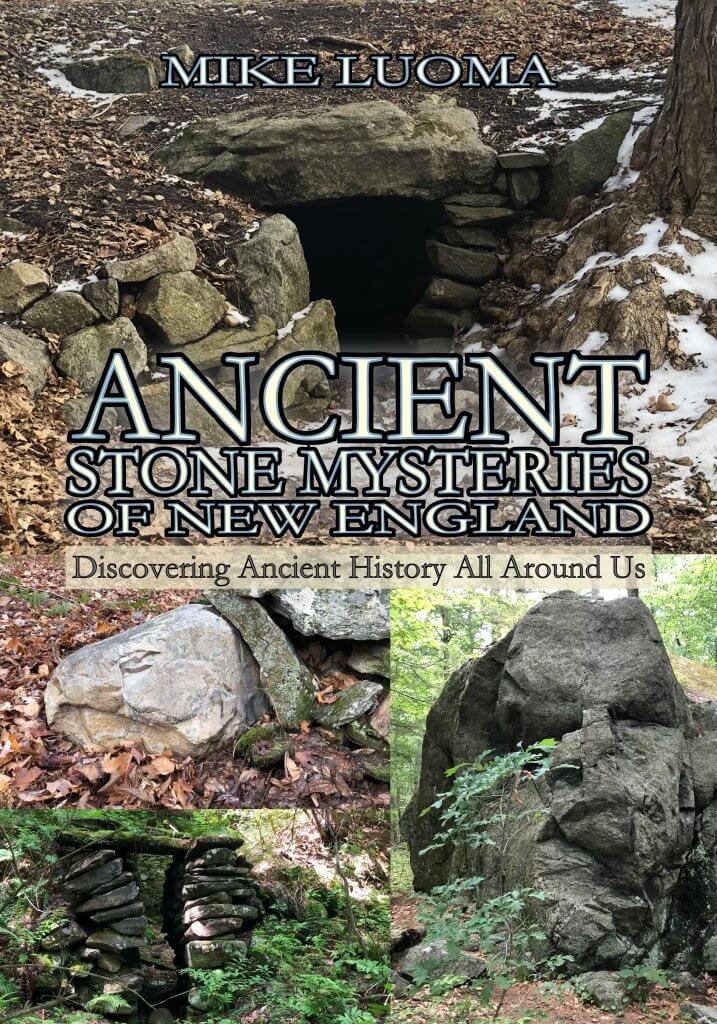- Burlington based author, researcher, radio host, audiobook narrator and podcaster.
- His latest book Ancient Stone Mysteries of New England was published in 2022.
- Host of the Glow-in-the-Dark Radio podcast for science fiction, and for music middays on WBKM.org.
- Creator of the Ancient Stone Mysteries YouTube channel and Facebook group.
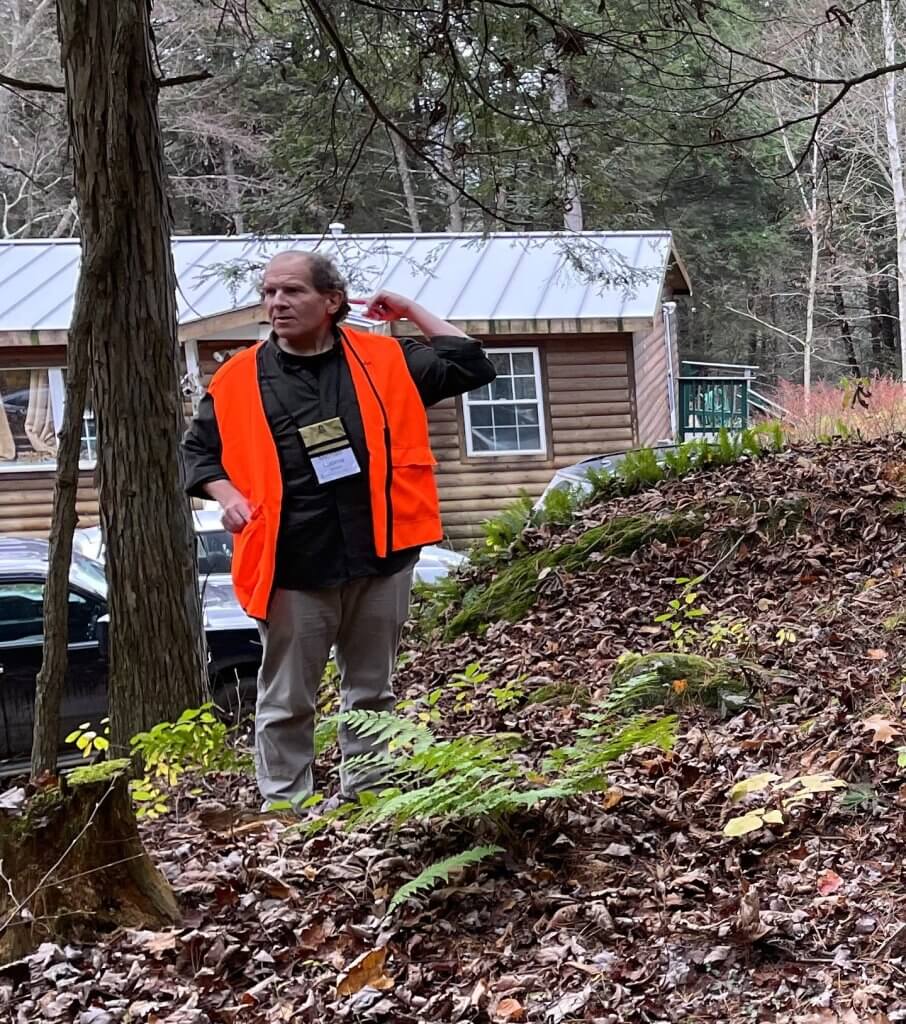
Contact Details & Links
- http://mikeluoma.com/
- http://glowinthedarkradio.com
- http://AncientStoneMysteries.com
- https://youtube.com/@AncientStoneMysteries.
- Ancient Stone Mysteries of New England | Facebook
- Glow-in-the-Dark Radio – Mike Luoma – Bio (glowinthedarkradio.com)
- https://ancientstonemysteries.com/The-Book/
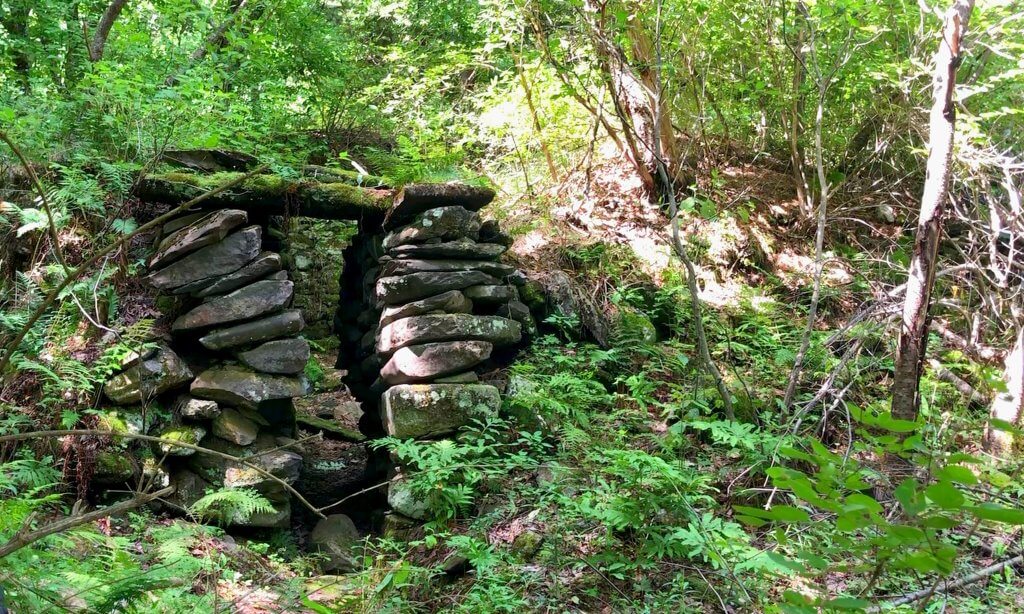
Interview Details
Date: Thursday, December 14th, 2023
Location: South Burlington
Length: 46:18
Episode Number: 42
Show Notes Link: vermonttalks.com/mike-luoma
Short Link: vermonttalks.com/42
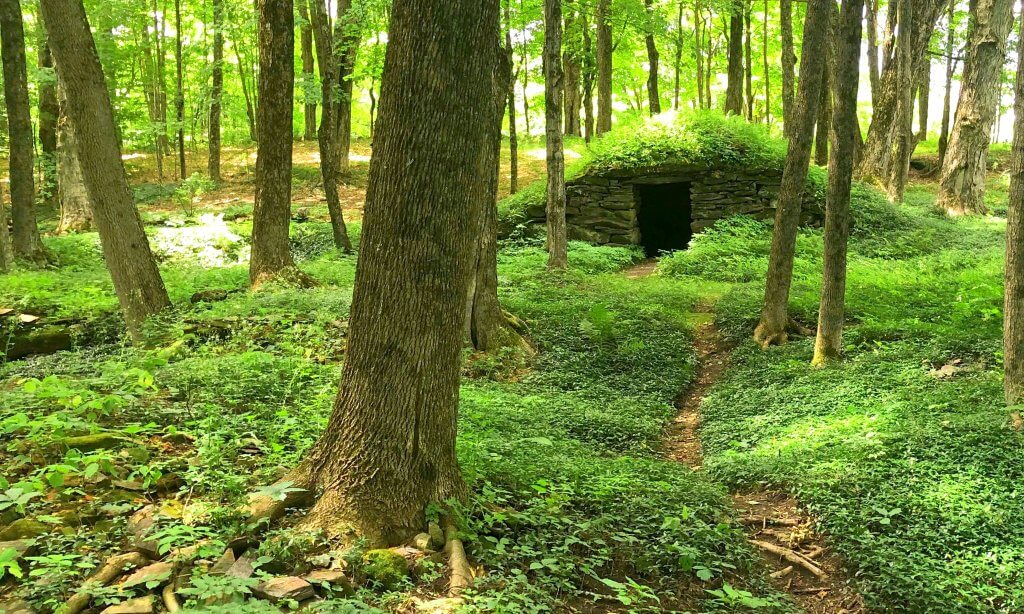
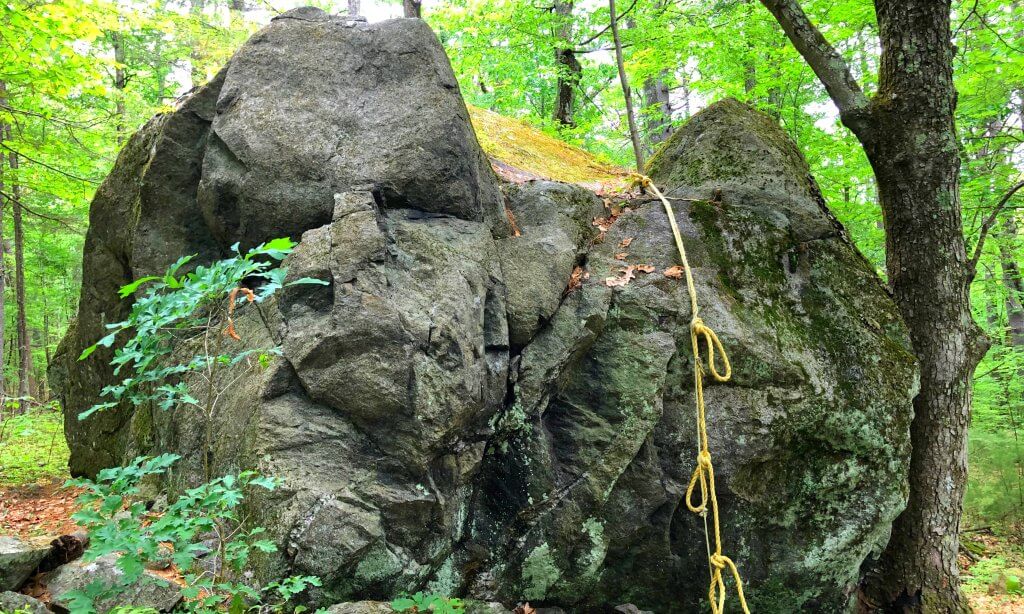
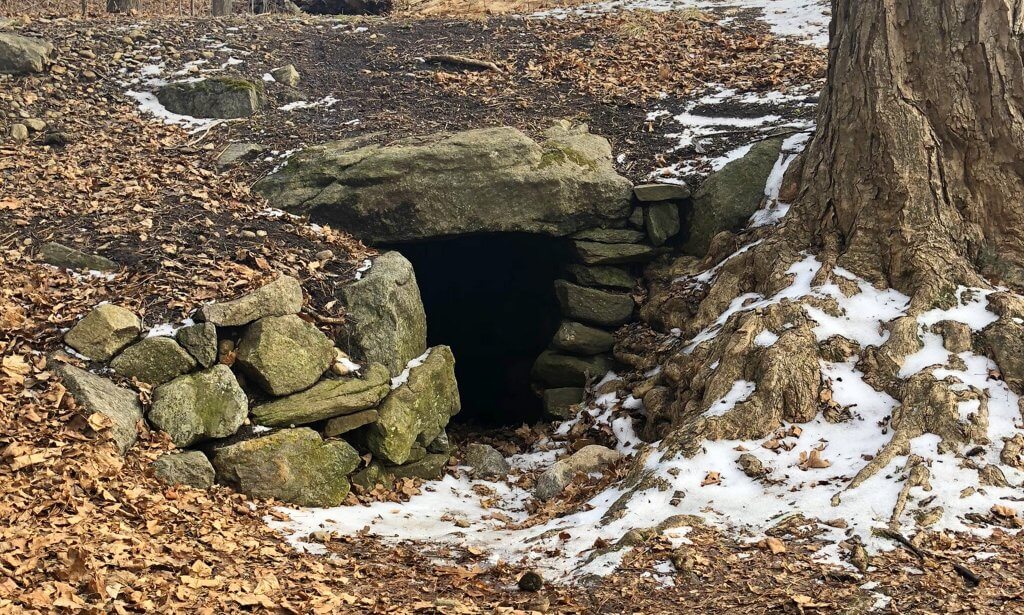
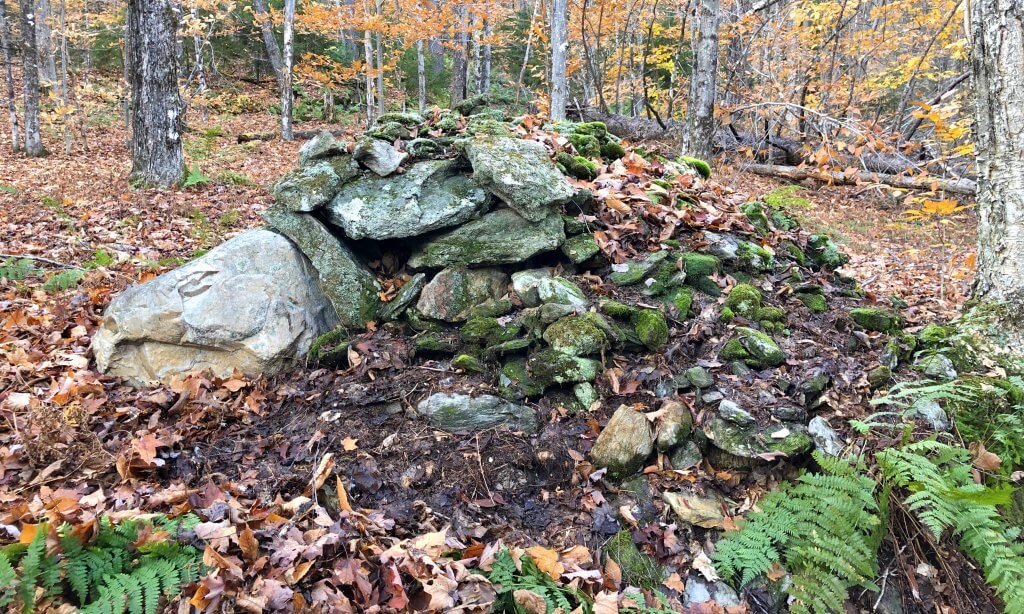
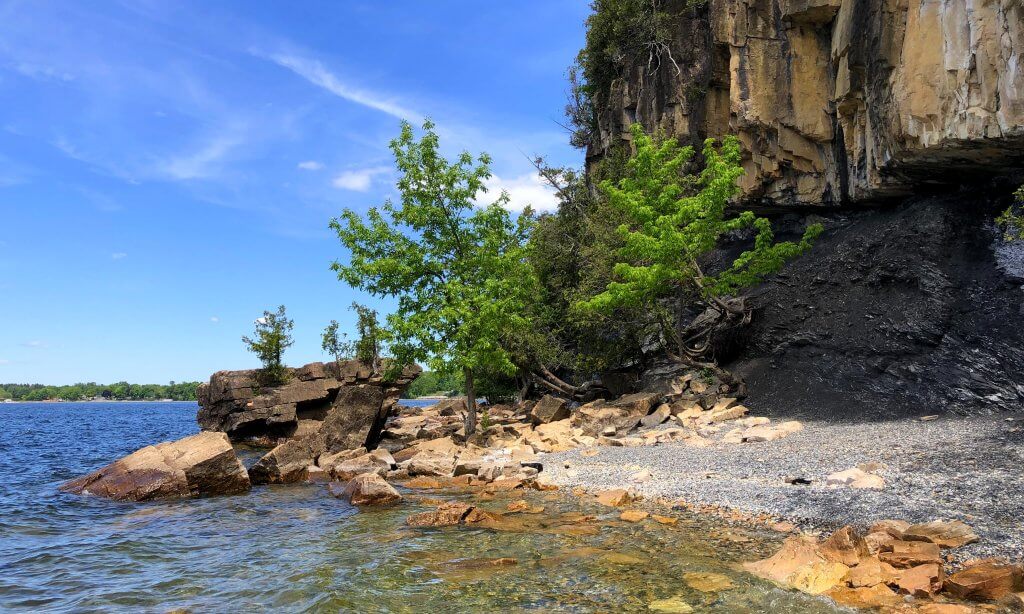
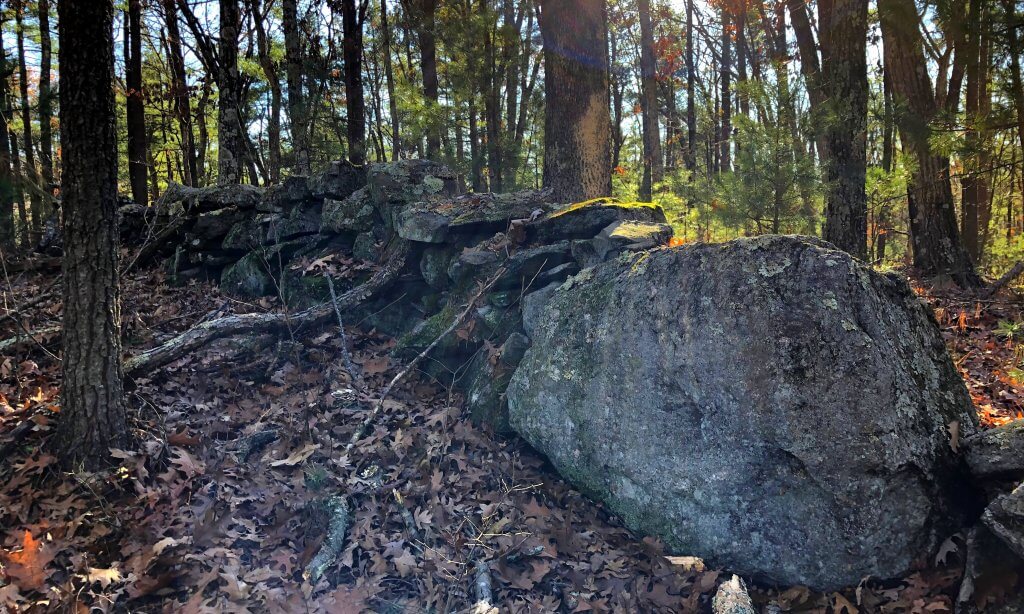
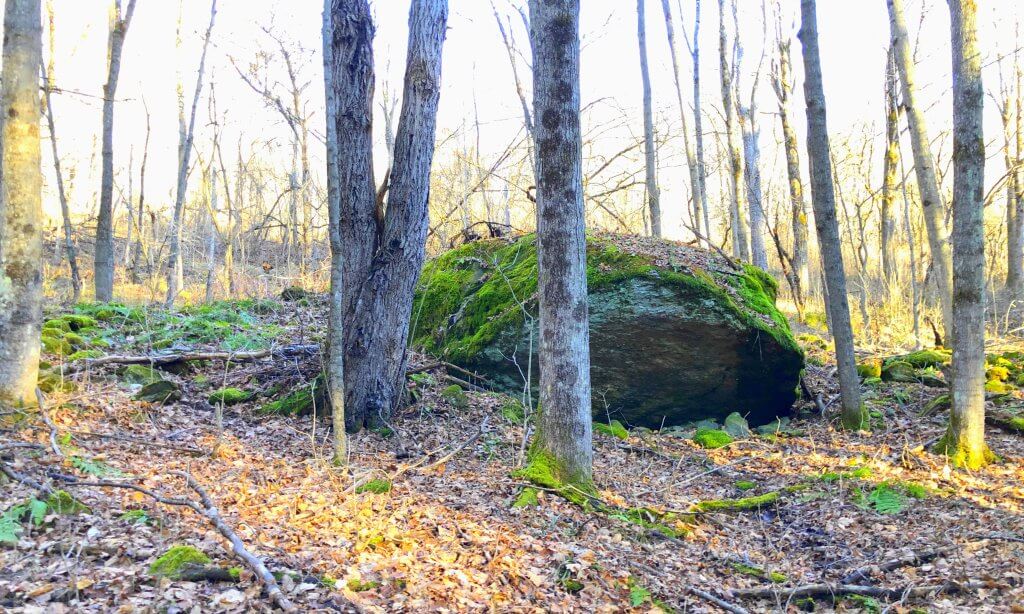
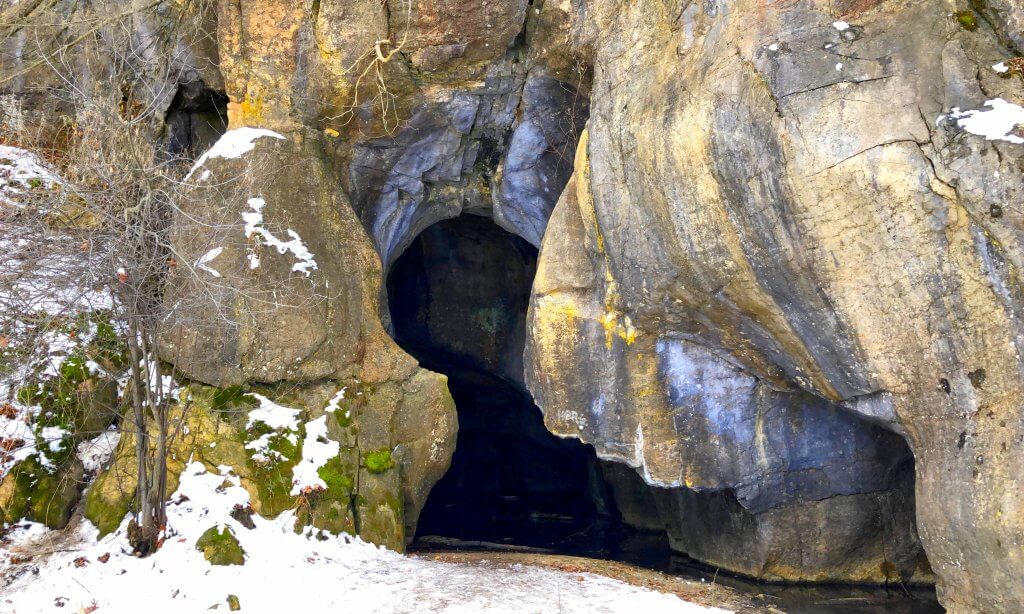
All Photo Credits to Mike Luoma!
Transcript
What’s New 802? I’m Becca Hammond, and you’re listening to Vermont Talks. Vermont Talks may include graphic or explicit content.
Listener discretion is advised. Welcome to Vermont Talks podcast. Today I’m here with Mike Luoma. Mike is a Burlington-based author, researcher, and audiobook narrator. His latest book is called Ancient Stone Mysteries of New England and was published in 2022. He’s the host of Glow in the Dark radio podcast for science fiction.
He also hosts music mid-days at WBKM.org, and he’s the creator of Ancient Stone Mysteries, the YouTube channel, and the Facebook group. Mike, welcome on the show today. Well, thank you very much, Becca. I’m so excited to have you here.
It’s fun having another podcaster on the show. Very, very cool. So let’s talk about you a little bit, and then we’ll talk about all of your different projects. So tell me about yourself. Where are you from? Well, I’m originally from Massachusetts.
I grew up down Hudson Mass, which is kind of in Central Mass near Worcester, in between Boston and Worcester. And I came up here to go to college. I went to St. Michael’s College. And after I graduated, I never left. So I’m one of those transplants. But I’ve been here now since 87 when I got out of college. So I spent a lot of time on the radio around these parts.
And so people might know my name and my voice actually from hearing me that way. But I’ve also been doing podcasting since 2006, because I was looking for a way to get my science fiction out. And I’m an independent author and researcher because my degree back in those St. Mike’s days was in journalism. So I’ve been a writer all this time too.
And these days, I’m looking into stonework. Very cool. And I’ve looked at your YouTube channel, I checked out your Facebook group, and it seems really interesting. And we’re going to deep dive into all of your research that you’ve done because I find this incredible. Props to you on being a podcaster for almost 20 years.
That’s amazing. That’s kind of in the early stages. 2006. I still was kind of like the second wave, but yeah, early.
Yeah, yeah, definitely not. I feel like podcasts didn’t really come into their own until the mid-20 teens, honestly. That’s when everyone suddenly was listening to podcasts constantly.
So that’s amazing. There’s kind of like a graph I could draw about how many people stopped asking me, what’s a podcast? Because there was a learning curve, but then it just went away.
That makes sense. Do you know how many different episodes you’ve put out over that period of time? I think I’m up to 772 or so.
Yeah. I got one of those Facebook reminders of a memory. Five years ago, I hit 500. That’s impressive. So what, you mentioned you’re a journalist and you’ve been on the radio.
Have you been on anything other than WBKM? Oh, sure. Yeah, I spent like 18 years with WISN, which was the wizard.
Yes. And then I was on the point for about 10 years, which is WNCS out of Montpelier and a few other signals. So I was there until 2018, and now I’ve been with WBKM.org since then. That’s amazing. Wow. Props to you.
I’ve been truly impressed. So how, I know you wrote your last book, Ancient Stone Mysteries of New England, just last year that came out. Do you have other books published?
I do. I have about seven science fiction novels out. Feel free to list them.
Let us know. Tell us about each, what is each one about, because that’s impressive as well. Well, that’s how I got started with doing a lot of this stuff. I wrote a science fiction trilogy called Vatican Assassin. They say, right, you know, I was raised as a Catholic kid. So I wrote about an assassin who works for the Pope in the sort of near future. And there’s a war going on where it’s a Muslim Christian war that was happening. And I wrote this beginning in like the 90s. And as I was working on it, went into the 2000s and 9-11 happened.
And it was like all of a sudden, things I was writing about were way too like real. Right. Very on point. So I took about a year off and then I kept writing. And then as I shared the book around, I wasn’t getting much publisher interest, but people who read it really liked it. So I decided to go the self-publishing route, which at that point was going out and getting your own books printed, having to watch out for predatory like Vantage Press or people that would, you know, take advantage of you and try to take your money and not really promote your books. And so I started to just do self-publishing and get my own stuff out there and into local bookstores. And I advertised on the radio somewhat because I figured, well, maybe people who listen to me on the radio would want to pick up the book.
And after about a year, I wasn’t really seeing much activity. And that’s when I started to promote it by putting out the podcast. So I started to do a chapter from the book each week. And that’s how I built up that podcast. But I actually put it out in 2005, was when I finally got the book itself out. And then I started the podcast in 2006.
And so there’s three books in the Vatican Assassin trilogy, where the sky BC, who’s a killer for the Pope of the new Catholic church, it’s, you know, about a hundred years in the future. Less so now than it was back when I wrote it. It’s like my future history is all messed up now because we haven’t lived it out really well.
I was way too optimistic as it turns out. But you can still read the books. And after writing Vatican Assassin in this trilogy, I had set up this whole kind of like future.
And I wanted to play in it some more. And I have people who are beta readers who read the books ahead of time for me. And at the end of the trilogy, she says, well, if he’s got a son, I hope we’re going to be reading his adventures.
And I went, yeah. And so I started writing the Adventures of Alibi Jones. He’s the son of the Vatican Assassin and a little further in the future. And so I’ve put out like four Alibi Jones novels. Oh, cool. That’s really fascinating. I love when an author can create a whole world and have everything kind of seamlessly flow together throughout their books.
That’s really cool. It’s too much fun not to keep playing in that future once you’ve created it. You do a lot of world building, but you also create characters. And so some of the characters have carried over from one series to another.
Others haven’t. And others are brand new. And we’re also expanding into a universe that’s already out there, like it’s already settled by aliens and cultures that have preceded us. So we’re kind of the new guys on the scene out there.
And so it’s kind of fun to play with that. And I’ve left things kind of hanging at the end of my last novel. And then I wrote the nonfiction book. So I still need to get back to finish things off from where I left things in the last novel, which was Alibi Jones and the Starseeds of Earth. Very cool. Alibi Jones.
I love the name. So let’s talk about the nonfiction book a little bit. Absolutely. It seems like you put a huge amount of work into researching this and fascinating things that you’re talking about on your YouTube channel, in your Facebook group.
Tell me what you find the most interesting and what’s the most important to you, because we could talk all day about this one book in particular. Well, I think like most people, I thought that all the stone walls and old stone stuff you see around New England was just from colonial farmers, sheep farmers, et cetera. As I began to look into it, because of some like kind of intuitive experiences I had, I began to discover that since the 1970s, there’s been a group of researchers saying, no, it isn’t just colonial. It isn’t just sheep farmers.
Some of the stuff is older and there’s actually an indigenous tradition of building with stonework. And when I first came across this idea, I was like, what? Yeah, because that’s not what they taught us in school. Yeah. It’s totally different.
If you grew up in Vermont, you also know they taught you in school that no Indians lived in Vermont. Yeah. And that is so untrue. Yeah, entirely untrue.
Oh, my word. And people are still here. It’s like they haven’t gone anywhere. They survived all kinds of crap and they’re still here.
I know and they’re still claiming they’re not here. It’s amazing. But so it was one of those things. It’s kind of like led me into this area where I’m like, well, let me learn more. And I discovered that, yeah, since the 1970s, there have been mostly avocational and amateur archaeologists, some people that are scientists in other fields who have come into this field and looked into the possibility this is Native American stonework.
And some of it started right in southern Vermont down in South Royalton. There’s a valley that some of these early researchers called Calendar. And Calendar One is what it’s come to be called. And there’s an ancient stone chamber in the middle of this calendar, as they call it.
So that’s kind of been, Chris and the Calendar One chamber. And what they found is that this bowl shaped valley that this stone chamber is in had different features on the horizon. And you could tell what time of year it was by what stars were going down past the different ridges.
And so this is why they decided it was a calendar. And they thought, well, we know that the Europeans weren’t doing this. So we know this had to be Native American, indigenous work that predates. And in trying to determine how far it predated, they looked at the procession of the stars, like what stars were going down when. And judging by when the Pleiades were going down, they were like, well, it’s likely that these date back to at least the 1500s, if not sooner. So there’s a developing idea of this in the late 70s, early 80s.
And then in 1989, these guys put out their book, James Maver and Byron Dix put out Manitou. And when I first had my, what I call my intuitive experience, it was in a stone chamber down in Massachusetts. And I started describing this and I was like, I felt compelled to show people pictures.
And I had before this never been into photography or video. So this was like the whole rabbit hole. And as I went down it and learned about these guys, I read Manitou.
What was fascinating to me is that as I was reading this book, the places and sites that they were describing, there were synchronicities occurring in my own life where people were reaching out to me and saying, hey, Mike, you want to go see calendar one? Hey, Mike, let’s go see. I can finally make a trip. We can go see calendar two because there’s another stone chamber that they call calendar two, which is in Southwoodstock, Vermont.
Cool. And this was like just after COVID had kind of done its first cresting and it was like the summer and people were starting to do more, but you couldn’t go out of state. So I was doing stuff in state. I had originally planned to like go see some of the mounds and stuff in the Midwest, because that’s what I had been researching. I was researching the indigenous people who built the huge mounds, like there’s a giant earthen pyramid in Cahokia, which is just outside of St. Louis, fifth largest pyramid in the world, and most people don’t know it exists. So I was getting into that, but didn’t realize there were actual examples of indigenous work, maybe not comparable to the fifth largest pyramid in the world, but still indigenous stone work right under my nose.
I didn’t know. And I was like looking into all the stuff in the Midwest. And then when COVID hit, I had to kind of focus more narrowly and all of a sudden began to realize, no, there’s stuff here. There’s a huge amount of it too. That’s what I find so fascinating is that I don’t know if we purposely overlooked this or if we always just made the assumption, ah, that was the colonial people.
Don’t worry about it so much. It’s very clearly man-made though, and I’ve even seen things on my own parents’ farm where I was taught, this seems off. Like, this doesn’t seem quite right, but what can you do as a person who knows nothing about archaeology if you’re just a vermonter walking through the woods? You kind of notice things and you go, that’s interesting, and you just kind of move on and you don’t dive into it. That’s really impressive. So are there any other sites?
I’m so fascinated by that. Oh, there’s sites everywhere, and I keep getting tipped to more. I was just tipped to a site in Richmond, and I was just at a site that was near that in Jericho that the site in Richmond seems to have stuff that might point to the other site. Oh, wow. So that’s fascinating. Yeah, I don’t want to give out too much information. Oh, definitely, definitely.
But, you know, there is my YouTube channel, and people can see. I did just do a video on this hollow in Richmond where I saw what are considered classic stone prayers, as they call them, built by indigenous people, more than likely. I need to get in touch with some of the Abnaki to find out what their sense is on this, though, because they’re not one of the tribes that’s talked about this as extensively. There’s a bunch of the federally recognized tribes are banded together in a group called the United Southern and Eastern tribes, or the United South and Eastern tribes, and they’ve put out resolutions recognizing this ceremonial stonework in the northeast.
They want to make a firm commitment. This is our ancestor’s work, and it needs to be respected and preserved. Yes, yes, and recognize, just recognize to start with, and then definitely preserved, because that worries me. We don’t know whose land is what, and what’s being just destroyed to build a house. People don’t know. It’s fascinating. Most state archeologists don’t recognize it yet, so we’ve run into that kind of an official denial. I’ll report stuff to our state archeologist, but he doesn’t get back to me on it.
I want to let him know, and I’m finding things that could be of interest, and maybe he’ll come around. I see something interesting in Indian Brook Reservoir Park. If you go up there, I don’t mind rows there that could be indigenous work, even though we assume that those are settlers’ work. I think it’s because we never assume that indigenous people work with stone, and some of the Europeans coming over were masons, and they had this lofty idea of people working with stone, and they would not attribute it to the savages as they called them as they came over here. Of course, when you look at the behavior, the question of who the savages were is, I think, debatable. Yes, very debatable.
Even in the Champlain Valley found remarkable possible examples of this stuff. I don’t want to say for sure that it is, but I will say that possibly it is. It should be considered. Someone should take a look at these things and try and determine where they came from and at what time period.
That’s so fascinating. Most of the stonework you talk about, do you find any carvings or is it mostly structural, like structure-based? Most is structural. Stuff I’ve thought has been carvings, people who know better have told me no. So I still think it’s maybe carving or work, but the people who know better tell me no.
Well, we’ll find out. I haven’t seen any petroglyphs, but there are some in Vermont, down in Belos Falls. There’s actual petroglyphs.
I just haven’t made it down to see those at this point. Is it on state land? Is a lot of what you’re finding on state land or is a lot of it on privately owned? I find it mostly on public land.
I’ve been invited out to a couple of private places, like a place in Huntington. A local resident invited me out and we found a stone structure, a cairn-like structure. He also had what looked like a semi-circle of stones around a like raised area next to an overhang. So that looked like it could be a little like maybe a sweat lodge or some hunting blind or something that somebody had created. I was invited out to Heinsberg too to see some features. So I’ve been to a couple of private places, but most of the places I go to are on public land because I want to see what’s available and I don’t want to trespass.
Yes, yes, exactly. Now, I also do a lot down in the area I grew up in in Massachusetts. Down there, I’m not as worried about trespassing because people don’t have firearms to the same degree. Valid.
Very valid. Also, this time of year, you have to go out wearing your blaze orange because there are hunters and other people out there. So if you’re going to do this kind of stuff, please be aware of being safe about it. That’s just a little thing I want to pass on. If you’re in the woods in Vermont, always just err on the side of caution because it’s easy to mistake things in the trees and there’s been too many accidents.
So yes, definitely wear orange if you’re going out. I’m truly fascinated by this. I would love to talk more about your book, but where can people buy your book? Where do you recommend people look for your actual written works? Where do you send people?
I send people to my website, to glowinthedarkradio.com or ancientstonemysteries.com. So those are the two main ones I have, but my books are everywhere. You can get them not necessarily in brick and mortar stores, but everywhere online. So if you do Amazon, they’re there. They’re at Barnes & Noble. They’re at bookshop.org.
If you’d rather not do any of the more commercial ones. Also at lulu.com, that’s my printer. I do everything myself and I do it print on demand. So all of this distribution is started at a site called lulu.com. So if you go there and look for my name, you’ll find my books as well.
A lot of my links lead back there because that’s kind of like my source printer. So tell me a little bit about the YouTube channel. When did you start the YouTube channel? Was that back when you first started working on all of these things?
Did that come later? I had actually already had the channel for some of the sci-fi stuff. I’d unbox science fiction books and show them off. I also do comics.
So I’d unbox the comics and show those off. But then I transitioned the channel to doing this stuff once I got into doing this. At first, I just, like I said, I wasn’t really creating videos. I went out and I saw these stone sites and I felt compelled to share them. So I made my first videos and shared those on this channel I already had, and slowly they took over. It was really when I went to see calendar two and made a video of that that things really took off because people were really interested in seeing what I had to show of that stone structure. It is a fascinating structure. I’ve heard everything from root seller to could be a Celtic monks oratorial.
So there’s different hypotheses out there as to what its original form and function was. But I did a video and put it out on my YouTube channel and all of that got a lot of interest. I shared it in an ancient Vermont group on Facebook. And for some reason he didn’t like that, I think maybe because it wasn’t his material. So he banned me from the group. And that’s when I started my own Facebook group. Yeah, definitely. That makes me sad because if you make a group on topic, you shouldn’t ban other creators just because I know there’s a lot of Facebook groups that are, I’m owning this group as my page or my YouTube channel or whatever they are.
But still, you would hope that they would want to collaborate and discuss and share in the conversation because all it does is help both of you grow and get more people interested. So that’s too bad. I apologize on behalf of whatever fool knocked you out of that group. But your Facebook group is very large and your YouTube channel seems to have a lot of traction. Yeah.
So I mean, as things have worked out, thank you for banning me. We’re just about to pass 14,000 people in that group. It’s amazing. I can’t believe it.
It’s like, I started it right about this time in 2020 because it was early December in 2020. That’s impressive. That’s only been a couple of years and to have 14,000 people, that’s amazing.
Do you find a lot of people, I forget if Facebook gives you those metrics. Can you tell if they’re all from New England? Is it people from all over the world?
A lot of them are New England, but there’s people from all over the world. Having been banned, maybe I shouldn’t say this, but I do ban people. Even with that many members, I try to let people have a space for discussion. And so I have no ridicule, no, you can’t make fun of people. That’s my rule because of what we’re doing. So if somebody does anything that’s making fun of somebody else, I’m like, no tolerance. I actually have a group myself.
It’s about pyrography, which is very random, but I do the same thing. If you’re being rude to somebody, I got no patience for that. You’re out.
I’m sorry. If you’re just talking, it’s fine. And if other creators share things, that’s what the whole group is about to me. But yeah, I have very strict policy as well. Do not make fun of people. And don’t make fun of people asking questions. That one really bothers me because we’re all here to learn. We’re here to discuss. And we get a lot of that because we get new people all the time joining and they want to know what’s the deal. I thought this was just sheep stuff. Right.
Well, that’s it. I’ve never heard of calendar one or calendar two until looking into your research. So this is, if someone comes in and asks, what’s calendar one?
What are you talking about? make fun of them. And I am lucky too because I do have other people who are doing this work who do contribute to the group.
So they’re sharing their pictures and stuff they see. I actually just the day after Thanksgiving was down in southern southeastern Connecticut checking out some stone sites with another researcher, Markham Starr. And he’s got a book called Ceremonial Landscapes that’s out. Very cool.
I brought him his book to have it signed as opposed to signing mine, you know, turn about his fair play. That’s awesome. Are there a lot of people that you’ve met just in real life versus on Facebook? Have you met a lot of different researchers just as you’re going out and exploring?
I have, but mostly because I joined a group called New England Antiquities Research Association, NERA. And it’s been great for networking. I’ve met a lot of people through that. What’s kind of cool is that as I first got into this stuff in like 2019 and I’m doing research and reading and trying to wrap my head around it, I’m now exchanging emails and information with people whose papers I was reading back in those days, you know, those days, 34 years ago. But still, it’s kind of neat to have progressed with all this stuff to a point that I’m working with those people now. Hey, you’re a respected member of the archaeological community.
The amateur archaeological community. I don’t want to say too much here. I have to interject where a lot of science is done. A lot of research is done by the amateurs.
I always find it fascinating. This is a totally different field, but astronomy, the amount of people who are amateur astronomers who are the people discovering new planets, like they find exoplanets. People have enough gear and equipment in their own home that they’re finding exoplanets. They’re looking at the local sphere and realizing that there’s things that the professionals have missed. So a lot of professionals are missing things in New England clearly and aren’t even acknowledging that they are actually ancient artifacts, that they weren’t from the colonists.
You know, they are always from Europeans. It takes the group of amateurs, so to speak, with air quotes, amateurs to really change science and change history and bring attention back to things we’ve missed, which we all know the victors wrote history and they often leave out giant details and change facts and three generations later. We don’t know. We totally forgot and we literally weren’t alive then. I’ve learned so much about the period of history before the Revolutionary War. It’s like when you’re in school, you go from the pilgrims landing in 1620 to the Revolution in 1776.
There’s a little bit of time in between there. Yeah, and they’ll skate right over it. I remember we learned about Native Americans, but it was so generalized and so much of it came from the Midwest because they just lost all the history in this area. So gloss over it.
There were no Native Americans in Vermont moving on. It’s been a fascinating journey just in terms of the education involved. I’ve had to learn a lot and it’s been fun because I love learning. You know, I’m one of those people who’s like into lifelong learning. So I’ve had to learn geology, history, astronomy, is it some degree? I do wish though that the professional archaeologists were as open to we amateurs as they are, say, in astronomy.
Because astronomy encourages that kind of crowdsourcing and work. Yes. That’s a beautiful thing. I’m actually familiar with some of the people that were instrumental in getting that kind of stuff started because of my science fiction work. I’d bump into them at science fiction conferences. But yeah, actually, a woman just did a PhD thesis on the acrimony that professional archaeologists have for us amateurs doing this work and CSLs on stone structures.
That’s great. That’s where we need to start is start pointing out that there’s there’s a problem here. Let’s recognize that it’s wild to me because it’s not as if it’s just like astronomy, right? The sky is too big.
The planet is too big. We need everyone looking. Anyone who’s interested should have eyes on should be totally open and OK sharing and not being ridiculed because they don’t have a PhD or whatever the metric is that makes you a professional. Open honest communication for everybody at data points. You need the data or else you can’t make any sort of assumption on anything if you don’t have the data.
And if you’re selectively picking data apart and throwing things out, that that just never ends well in scientific fields, no matter what field it is, medical, historical astronomy, all of it, you need the data points. And luckily, there is some change coming. And, you know, as as older folks die off and leave us, some of the younger ones have more open minds and even some of the older ones. Curtis Hoffman is a professor emeritus from Bridgewater State University in Massachusetts. And he’s got a book out called Stone Prayers on this stuff, which came out in 2018. Now, he accuses his colleagues of being scientific and engaging in scientism because of their stance towards the stonework.
But he’s open to it. And this this Stone Prayers is a study where he like creates data points and and shows how these structures are more likely indigenous than anything else. Makes total sense to me. I don’t see how I don’t see how we got to this point where we pretended that it just didn’t happen.
I don’t know if it was just racism back in the tur- you know, when people moved to America and hit the East Coast, it was not very politically correct by any means. And they just kind of stomped over everything. And we we all forgot that there were people here before us. I think from what I’ve seen, once I learned to look for what I consider signs of indigenous work in a stone row, say an old stone wall, I call it a stone row now to try to differentiate. But when I see these signs, sometimes I see that they’ve been adapted.
A lot of stuff it looks like has been, you know, turned into straight stone rows or you can see there’s old designs, but new stuff is built and built on top of them. So I think a lot of people came through and adapted what was here because you use what’s here. And probably a lot of people assumed, oh, that was just some crazy guy who tried to settle the land before me and quick claim. And now I get this land and so I just got to use whatever this old farmer did. So I think there were a lot of like assumptions.
Yeah. And you know, people would assume because, you know, their grandfather had the farm that, oh, he probably did that back when. So I don’t know that there’s necessarily like even like acrimony there or, you know, an ill intent in assuming that it’s all colonial or settler work or post-indigenous work. I think a lot of it is just assumptions.
Yeah. Yeah, which makes total sense because that’s a lot of farmers in this area. They just, you would never maliciously say, oh, at least not in today’s age. Oh, no, it couldn’t have been Native Americans. It must have been a colonial farmer. But it’s just the assumption that’s just the world we all grew up in.
Going back 200 years at this point, that was the world they grew up in. Yeah, that’s fascinating. Okay, we need to talk a little bit about your science fiction podcast. Let me get the name right. Glow in the Dark Radio podcast. What a great name.
Great name. And I read the synopsis on your website. So you read your science fiction on your podcast?
I do. Well, I’ve been narrating audiobooks for years. It’s one of the things I do. And I got into that because of podcasting my own science fiction. So, yeah, originally, as I said, in 2006, I was trying to figure out a way to promote my books. And I’m like, well, what’s this podcasting thing?
I could try this. And it worked. I mean, as I put out the chapters week by week, I built an audience and ended up getting invited to science fiction conventions and put the books out. And things just kind of took off from there. And now I still do it every week.
It’s like, time to do the podcast. So one chapter a week? Is that your structure? It is.
Roughly. When I was first writing the books, I look back now and I wonder why I have like chapters that are way too long. So I’ve had to divide up some of those chapters just to make it more like manageable in terms of individual episodes. Yeah. So not every chapter is a 20-minute chapter. But that’s about what I strive for in terms of I want to have at least that much contact. And but I’m in the second book now.
I’m doing a re-re-presentation of the Vatican Assassin trilogy and the second book is called Vatican Ambassador. And I just had a chapter that in recorded terms came out to be two hours long. I’m like, what was I thinking? So I had to divide that one up. Yeah. So it’s not necessarily a chapter each week, but roughly.
It makes total sense. I feel like a lot of us who listen to audiobooks and podcasts, we have these moments where it’s like the four-hour podcast. You love it, but it gets really hard if you lose your spot and you end up having to click around like, where did I leave off? I’ve just skipped over something or now I’m re-listening to the last 10 minutes because it’s just such a long file. So props to you. It’s definitely good to keep your listeners in mind when you’re reading something like that.
It is easy to go very long. I’ve had a couple, I think two and a half hour long podcasts. Whoa, I feel like we talked about so much that I’m getting lost in what we discussed. And I’m the one who actually had the conversation. So I just imagined for my listeners that they said, whoa, back it up.
I missed something. I started talking to someone. Now I need to go back. Oh no, now I’m listening to everything over again.
What happened? It’s an interesting medium, just having audio only. It’s really nice if you can get transcripts and all of those written, which helps with placeholders in the audio file. But it’s really nice. I appreciate that you do break it down a little bit. Now I figure if people want the whole thing, they can go get the audio book because I’ve actually got the entire trilogy as an audio book.
It’s like 30 hours. Nice. That’s really cool. So did you, and you recorded it, must be obviously yourself.
Oh yeah. You recorded your entire audio book series yourself. Although I need to say for Vatican Assassin, it was a few years ago now, it was the 15th anniversary of it. And because we were in the midst of the pandemic, I was able to reach out to about seven other voice actors who I’ve been podcasting and they’ve been friends of mine and we know each other from both online and conventions, et cetera. They actually did voices for me.
So the first book is a 15th anniversary edition audio book of Vatican Assassin where it has these other folks doing voices. That’s really fun. I always appreciate that sort of attention to detail. It just makes it so much more lively too as you’re listening to an audio book.
I love audio books. That’s really, really cool that you did that. Wow. Wow.
So do you do all your own editing as well with these recordings? Oh yeah. I mean, I started before there were people that you could farm it out to. So I just, I’m all DIY, everything I do. That’s amazing. That’s so cool.
So glow in the dark radio podcast. That’s such a good name. So and we get this straight.
I’m trying to keep this all straight in my head. Do you have YouTube channels associated with the podcast as well or is it just the ancient stone mysteries? I have a podcast YouTube channel, but it’s just a glow in the dark radio audio only channel. Got it. Separate from the ancient stone mysteries channel. Okay.
Which makes total sense. A lot of people find my podcast on YouTube. It’s a great thing if you can do it.
It’s so much extra work to build out all of these different platforms. I just wanted to keep that straight because I thought you had two different channels. So tell me a little bit about your time on the radio. That’s really cool as well. You’ve been doing all sorts of fun things your whole life. Well, I was actually the very first DJ in the world to ever play fish on the radio. That’s an honor. That’s amazing. That’s because they were a Burlington band and I was a Burlington DJ and I was going to see them play and they gave me a demo tape and I brought it down to IZN and we began playing one of their songs. That’s so cool. And you have the honorary position as the DJ who played fish.
I didn’t even know that was the case until a couple years later. I was doing an interview with with Tray Anastasio on one of their new albums coming out. I think it was Hoist was coming out.
He said, you know, Mike, you were the first guy to ever play us on the radio. I was like, whoa. Oh, yeah, that’s really cool.
That’s impressive. And what you how long were you? You said you were on the wizard for how long? 18 years.
That’s incredible. What when did you start and when did you stop? It was 88 through 2006. Very cool. And I actually had a show on there called Glow in the Dark Radio for a little bit.
Interesting. So this is all the name has been with you for a while. Oh, it predates IZN. It goes back to college when I was at St. Mike’s at WWPV for four years. My show was Glow in the Dark Radio. So you’ve been on the radio as long as you could be on the radio pretty much.
Yeah, since since I’ve been talking to people in Vermont since fall of 83. Very impressive. And WBKM. What station is that? That is online only at this point. It used to be a broadcast station, but now it’s WBKM.org.
So you can listen online at that site or go to like the App Store and get the WBKM app and listen to us that way. And I do a show every day at noon time. These days. Every single day, not just weekdays.
Oh, just weekdays. Sorry. Got it. Got it. Okay. And usually I try to do different topics and different things.
Usually Fridays are new music shows because we’ve been getting new stuff in, but as we get closer to the holiday, those Fridays won’t be new music shows because I don’t get new music. People stop putting it out. Yeah. Oh, that makes total sense, especially. It’s just a dreary time of year.
People are kind of busy. It makes total sense. Yeah.
I mean, music around the holidays, they put out like greatest hits albums because they know people will give those as presents. Oh, that’s interesting. I didn’t know that.
Interesting fact. Do you have any preferred types of genres? Totally eclectic? I’m pretty eclectic. I mean, I guess if I go home and put on music, it’s usually probably progressive rock.
I like go to like big, complicated, orchestrated things. King Crimson. King Crimson, yeah.
Yeah, I love some prog rock myself. I was just curious though. That’s amazing because you’ve got all these different projects going on simultaneously. Do you think, are you writing currently?
Can I ask that question? Sometimes that’s a… Oh, I’m always writing. Like for the book, the book I actually put together from a bunch of articles I had been writing over time about the stone sites.
And of course, there’s a lot of other stuff in there too. So I’ve continued to keep writing. I’ve got a sub-stack. I write on medium and I put stuff out that way. I also write for that group near is transit. They have a newsletter. So I report on things to that as well.
That’s amazing. So constantly writing, you’re writing articles. You have a blog full of… Multiple blogs full of articles.
That’s amazing. How often do you think you put out new content? Is it like every single week you’re putting out either… Well, obviously you’re putting out your podcast show. You’re on the radio every single weekday. Writing articles.
How do you find the time to do all of this? I’m in prayer. Well, don’t have kids. So that helps. And I don’t drink alcohol. So maybe that gives me a little more time to play with as well.
Maybe that makes me boring. I don’t know. I just… I don’t do a lot… Like when I first started writing, I decided I couldn’t play video games.
It’s gonna be one or the other. So I gave up video games. And I think you have to decide that you’re gonna do this and carve out time for it. Yeah. And it can be done. It’s just that you have to really be dedicated to it.
Yeah, content creation in general, whether it’s video, audio, writing, there’s a huge amount of work to go into this. If you want to do it well, I feel like you could kind of… You could probably get by not trying too hard, but a lot of people will not pay any attention because they can tell you didn’t try very hard. Yeah, because everybody’s got the ability to do these things now. So you really have to rise above or who’s gonna pay attention. Yeah, exactly. And just what you said about not drinking alcohol, the most productive people I’ve met are people who don’t drink. And they proudly say I don’t drink. And the businesses people in town have created, I’m just at the… Just as a reference, the man who runs the Burlington Record Shop, he put that entire business together so quickly and just grinds on that business.
And it’s truly impressive. And he said the same things, that I don’t drink. This is my baby. This is my whole world. And I’m still shocked going into that business. Like, wow, you accomplished so much here. And it didn’t exist three, four years before I met him.
And it’s amazing to see what people can accomplish when they really set their mind to it. I should also mention I have a very forgiving girlfriend. Because if she’s listening to this, I want to be sure she hears that. Because she’s been very understanding in me putting my time in and doing this stuff. You’ve got to put the time in to do as much as you’re doing. I’m amazed how much you’ve got. And wow, it’s an honor to talk to you. So, Mike, we’re just about at 45 minutes.
Ah. Is there anything that you’d love to tell people about yourself, about your work, anything in particular we haven’t covered yet? Mmm, wow. That’s kind of broad. And we’ve covered a lot. We’ve covered a lot. But I always have to say that because I might have missed something big that you really feel like is important to you. I want to make sure we cover what’s important to you. Well, the reason I wrote the book and do all this stuff is I want people to take a look around them and realize that this world has been going on for a lot longer than we realize. The Indigenous people have been here since time immemorial, they tell us, which means to the Ice Age and probably earlier. And as you look into this stuff, their stories confirm that.
Mm-hmm. And I think it’s important if I can get people to read my book or, you know, watch a video and begin to look around themselves and look into their own backyards and go, wait, how old is this stuff? And begin to have their minds expanded a little bit in this direction, begin to think a little bit differently, realize that this wasn’t some vast wilderness when Europeans arrived, but rather if you read the actual historians like 1492 and other early historians now, they tell us this was like a garden, that this was cultivated and it was maintained by these Indigenous people.
And so even like our ideas about ecology need to be shifted because we’re not trying to preserve something that was wild, we’re trying to preserve something that was tended. And so if I can get people to think larger, I guess that’s what I want to do. That’s a beautiful message. I can appreciate that. That’s a beautiful message.
Everyone should open their eyes a little bit more. You might have history in your backyard and not even know it. You probably do. That’s the amazing part of this.
Probably actually do. Well, let’s cover a few of your links. So Mike Luoma, m-i-k-e-l-u-o-m-a .com. That’s your main site. And glow in the dark radio, spelled as said, dot com. Those go to the same site.
Oh, do they? Okay. I probably knew this.
Those are the two big ones. And you’ve got a whole bunch of other links, and they’re all going to be on my show notes page. So I’m going to point people at romonttalks.com forward slash 42, and they’ll get all of the links, links to your YouTube channel, links to your podcast, links to everything that you’ve provided to me.
Any other last words you want to share? Well, ancientstonemystories.com, because I keep things a little bit separate, so I just want to be sure I get that in there. Is that one linked off of your mikeluoma.com? I think so.
I hope so. Okay. All right.
Ancientstonemystories.com. Don’t forget that one as well. Okay. Because that’s what we’ve been talking about, so I wanted to… Yes, let’s make sure that that one’s there.
Inject it in there a little bit. We’ll put that one at the top of the show notes page as well. It’s been fantastic talking with you, Mike. If you write another book, please let me know. I’d love to have you back on the show so we can talk some more. Well, thanks for letting me, you know, talk about all this stuff back on. I appreciate it, you know?
I love hearing people’s stories, and I really love your message. Everyone should open their eyes and think a little different. Nah, because there’s a lot more outside around us than you know. Yes. Yes. All right. Well, have a great day. Thank you all for listening. Thanks so much to Jason Baker for creating the show music.
